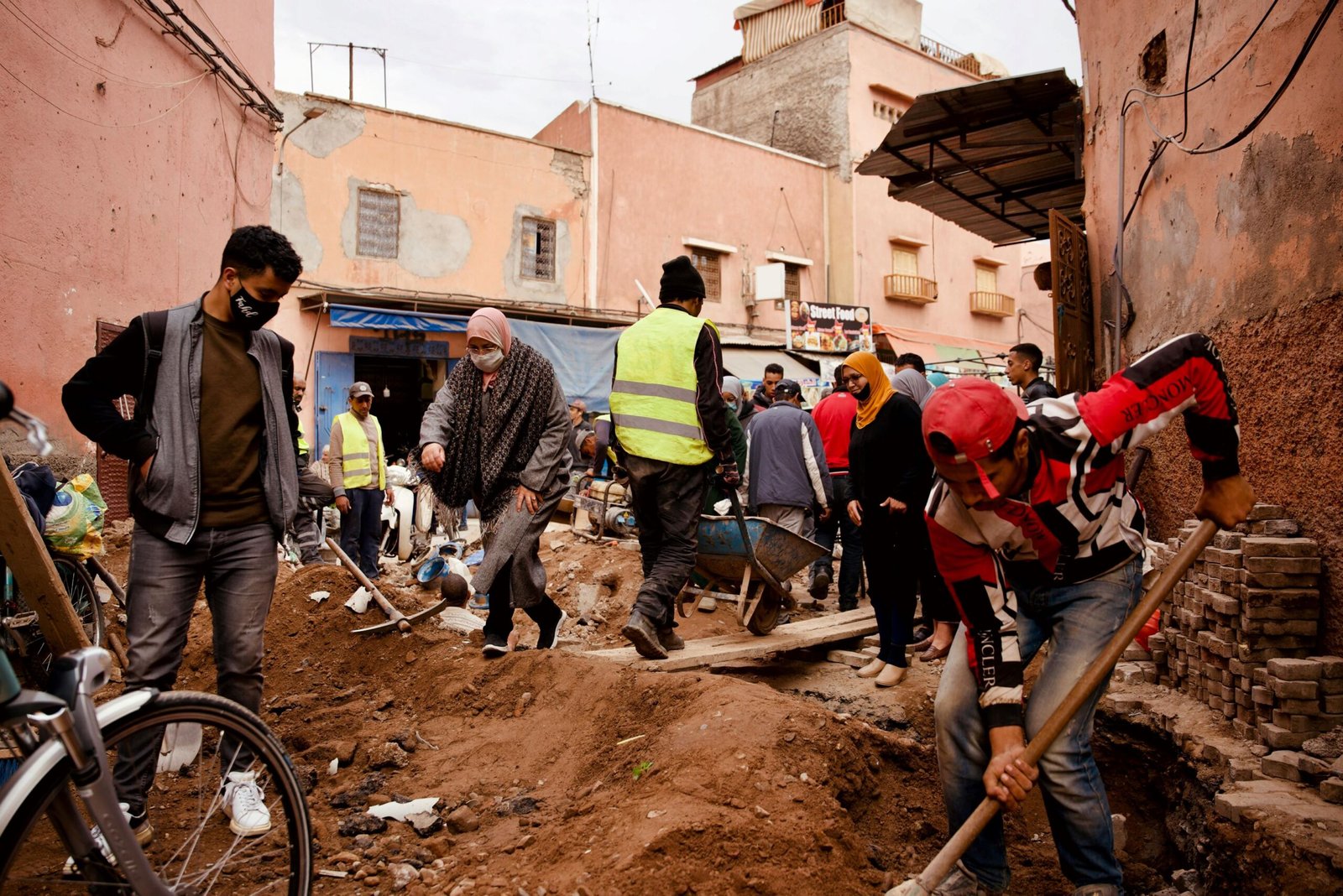The Farreach Framework: A Catalyst for Development Interventions in Africa
Introduction to the Farreach Framework
The Farreach Framework represents an innovative and comprehensive methodology designed specifically to tackle the myriad developmental challenges encountered across Africa. Acknowledging the continent’s diverse environments, cultures, and economic conditions, the framework was established to foster sustainable growth tailored to local contexts. Its origins can be traced back to collaborative efforts among development scholars, policymakers, and practitioners who recognized the limitations of traditional approaches in addressing Africa’s unique issues.
The primary purpose of the Farreach Framework is to provide a structured yet flexible approach to development interventions. By emphasizing collaboration and stakeholder engagement, the framework promotes an inclusive culture that ensures diverse voices are represented. This participatory design empowers communities to identify their needs and develop solutions that resonate with their specific circumstances. As a result, the Farreach Framework aims to drive impactful change by enabling local populations to take ownership of their development processes.
Key principles underpinning the Farreach Framework include adaptability, sustainability, and inclusivity. The adaptability aspect allows the framework to be tailored to individual communities, acknowledging that a one-size-fits-all model is seldom effective. Sustainability focuses on ensuring that development interventions lead to lasting improvements in quality of life, rather than temporary fixes. Inclusivity strives for equal representation of all stakeholders in the planning and implementation stages, fostering a sense of collective responsibility towards developmental goals.
In the broader context of development interventions, frameworks like Farreach are crucial for promoting coherent strategies aligned with specific local dynamics. Understanding the critical need for effective models that can adapt to and resonate with diverse environments is imperative for fostering sustainable growth and development throughout Africa.
Key Components of the Farreach Framework
The Farreach Framework serves as a vital structure for implementing effective development interventions in Africa, built upon several interdependent components that work harmoniously to achieve sustainable results. Among these critical elements, community engagement stands out as a cornerstone. Engaging local communities not only fosters trust but also ensures that interventions are contextually relevant and culturally appropriate. By actively involving community members in the planning and implementation processes, initiatives are more likely to gain acceptance and yield long-term benefits.
Another pivotal component of the Farreach Framework is data-driven decision-making. This approach emphasizes the importance of utilizing empirical data gathered from the communities themselves to inform strategies. By leveraging local insights and quantitative measurements, development practitioners can identify needs accurately and allocate resources effectively. For instance, projects that have adopted this approach often exhibit heightened responsiveness to community priorities, thereby enhancing overall efficacy.
Scalability is also intrinsic to the Farreach Framework. This component addresses the need for solutions that can be expanded or replicated across various regions. A scalable intervention enables practitioners to not only meet immediate requirements but also to prepare for future challenges. Successful examples include agricultural programs that initially targeted individual communities but later extended their reach to incorporate neighboring areas, resulting in broad-based agricultural development.
Lastly, the adaptability of the Farreach Framework ensures that strategies remain fluid and responsive to changing circumstances. Flexibility allows practitioners to modify interventions in real-time based on feedback and emerging data. As seen in various health initiatives, being adaptable has led to improved outcomes by allowing programs to pivot swiftly in response to unforeseen challenges such as outbreaks or natural disasters.
In conclusion, the interplay of community engagement, data-driven decision-making, scalability, and adaptability forms the foundation of the Farreach Framework, ultimately leading to effective development interventions in Africa. These components are not merely standalone elements; rather, they interact synergistically, enabling practitioners to craft tailored solutions that respond adeptly to the unique and evolving context of African communities.
Impact of the Farreach Framework in African Development
The Farreach Framework has made noteworthy strides in driving development interventions throughout various African nations. Its primary objective has been to facilitate sustainable growth and enhance living standards across multiple sectors. Numerous success stories have emerged, illustrating the positive impacts achieved through this framework, particularly in areas such as economic growth, healthcare, education, and community empowerment. These sectors demonstrate the effectiveness of the Farreach Framework in addressing localized challenges while fostering broad-scale development.
In terms of economic growth, countries that have adopted the Farreach Framework have reported increases in Gross Domestic Product (GDP) and job creation. For instance, in East Africa, microfinance initiatives supported by the framework have enabled small businesses to flourish, resulting in greater employment opportunities and poverty alleviation. Similarly, improved health outcomes have been observed, with enhanced access to healthcare services and the introduction of health education programs that have significantly reduced the prevalence of common diseases in certain regions.
Moreover, in the realm of education, the implementation of the Farreach Framework has yielded measurable improvements in literacy rates and access to educational resources. Collaborative partnerships established between governmental entities and non-governmental organizations have focused on enhancing educational infrastructure, thus enabling more children to pursue quality education. Community empowerment is another critical aspect, with various local groups mobilized to advocate for their needs and influence policy decisions.
However, the path has not been devoid of challenges. Implementation difficulties such as funding gaps, cultural resistance, and coordination issues among stakeholders were encountered. Strategies employed to mitigate these challenges included fostering partnerships among diverse actors and ensuring that solutions were culturally relevant and aligned with local expectations. Valuable lessons learned during this process have not only strengthened the framework but have also established a foundation for future interventions, underscoring the profound significance of the Farreach Framework in enhancing African development. Testimonials from stakeholders reflect the necessity and impact of this initiative, further affirming its crucial role in driving progress across the continent.
Future Prospects and Recommendations for the Farreach Framework
The Farreach Framework serves as an essential tool for addressing the diverse development needs across Africa. As the region evolves, driven by socio-economic dynamics and increasing challenges, the framework must adapt to remain effective. Future prospects for the Farreach Framework will hinge on its ability to incorporate insights from ongoing developmental experiences while addressing new opportunities for interventions. The focus should be on enhancing the framework’s responsiveness to emerging issues such as climate change, urbanization, and technological advancements.
One of the core recommendations for stakeholders involved in development interventions is to adopt a collaborative approach. This entails uniting various actors, including governments, non-governmental organizations, community groups, and private sector entities, to ensure a holistic understanding of local needs. Such collaboration would not only promote resource sharing but also encourage inclusive participation from different sectors of society, thus strengthening the framework’s foundations.
Moreover, innovations in data collection and analysis should be emphasized. The integration of advanced technologies, such as Geographic Information Systems (GIS) and mobile data collection platforms, can provide real-time insights into community needs, allowing for more precise interventions. Continuous feedback loops must also be established, enabling stakeholders to learn from implemented projects and refine strategies over time.
Continuous learning and iteration are imperative for the Farreach Framework to adapt to shifting contexts. By maintaining an agile approach, stakeholders can ensure that development interventions remain relevant and effective. Investing in capacity-building initiatives will also empower local actors, equipping them with the skills necessary to engage effectively with the framework. Ultimately, through these recommendations and a commitment to sustainable practices, the Farreach Framework can significantly enhance its impact across Africa’s development landscape.


